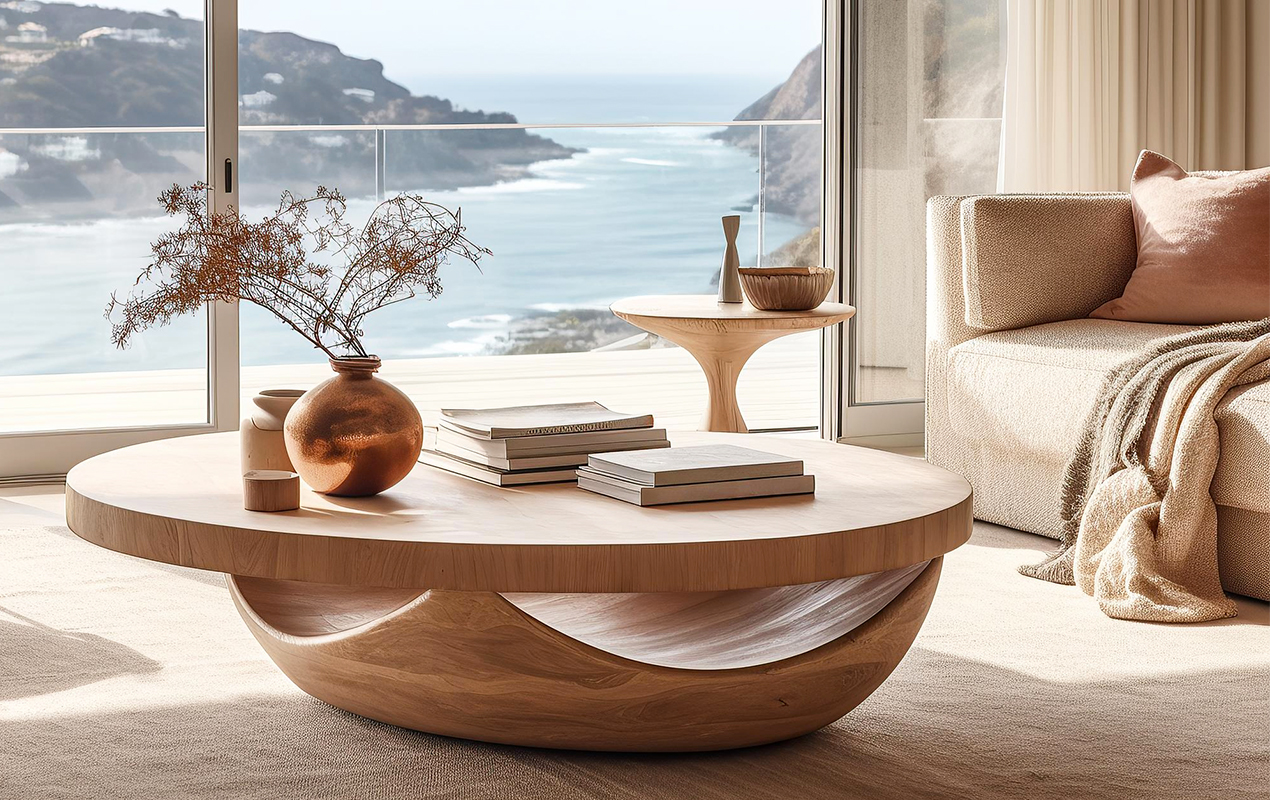Join us in our mission
We’ve been on a mission: to help everyone in the world learn how to do anything. Today, we’re asking that you join us. You can request publication of your article for publication by sending it to us via our Email
The Background:
In the realm of furniture, few pieces have undergone as much transformation and adaptation as the humble coffee table. What was once a simple, utilitarian item has evolved into a centrepiece of modern living spaces, combining functionality with aesthetic appeal. Let’s delve into the fascinating journey of the coffee table, exploring its history, its changing roles, and its enduring relevance in contemporary interior design.
The Birth of a Practical Companion
The origins of the coffee table can be traced back to the late Victorian era in Britain, where it emerged as a practical solution to a growing social ritual: the consumption of coffee. As coffee houses gained popularity, so did the need for a low, sturdy table to accommodate the serving of coffee and other refreshments. These early tables were typically small and modest, designed primarily for function rather than style.
Rise to Prominence
The coffee table’s ascent to prominence came in the early 20th century, propelled by shifts in social behaviour and design trends. With the rise of the middle class and the increasing popularity of home entertaining, the living room became a focal point of domestic life. The coffee table, positioned at the heart of this space, assumed a new significance as a platform for social interaction and display.
Functional Versatility
As the decades passed, designers began to experiment with new materials, shapes, and configurations, expanding the coffee table’s repertoire beyond its original purpose. Glass, metal, wood, and stone were all employed to create tables of varying sizes and styles, catering to diverse tastes and lifestyles. Some featured built-in storage or adjustable heights, catering to the practical needs of modern living.
Aesthetic Evolution
By the mid-20th century, the coffee table had transcended its utilitarian origins to become a bona fide design object. Influential designers such as Isamu Noguchi, Florence Knoll, and Charles and Ray Eames introduced iconic pieces that blurred the line between furniture and sculpture. These tables, with their sleek lines, innovative forms, and emphasis on craftsmanship, elevated the coffee table to a symbol of sophistication and taste.
Cultural Significance
Beyond its functional and aesthetic qualities, the coffee table acquired cultural significance as a reflection of societal values and aspirations. In the 1960s and 70s, for example, the popularity of low-slung, conversation-pit-style tables mirrored the era’s embrace of informal living and communalism. Similarly, the minimalist aesthetic of the 1980s gave rise to sleek, minimalist tables that spoke to a desire for simplicity and order.
Contemporary Interpretations
Today, the coffee table continues to evolve in response to changing lifestyles and design preferences. From minimalist Scandinavian designs to opulent, statement-making pieces, there is a coffee table to suit every taste and space. Moreover, the advent of online marketplaces and DIY culture has empowered individuals to personalize their coffee tables, whether through custom finishes, unconventional materials, or inventive repurposing.
Tips to Open Coffee Table Outlet
Opening a coffee table outlet can be an exciting venture, combining your passion for furniture with entrepreneurship. Here are some tips to help you get started:
Market Research:
Begin by researching the local market to understand the demand for coffee tables in your area. Identify your target demographic, including their preferences, buying behaviour, and spending capacity.
Location:
Choose a strategic location for your outlet, preferably in a high-traffic area with good visibility. Consider factors such as accessibility, parking facilities, and proximity to complementary businesses like home decor stores or furniture showrooms.
Supplier Selection:
Establish partnerships with reliable suppliers or manufacturers of coffee tables. Ensure that they offer a diverse range of styles, materials, and price points to cater to different customer preferences.
Inventory Management:
Maintain a well-curated inventory of coffee tables, including popular designs, trending styles, and classic pieces. Monitor sales data and customer feedback to adjust your inventory accordingly and avoid overstocking or under stocking.
Visual Merchandising:
Create an inviting and visually appealing display of coffee tables in your outlet. Arrange them in stylish vignettes to showcase their versatility and inspire customers with decorating ideas.
Customer Service:
Prioritize excellent customer service to build trust and loyalty among your clientele. Train your staff to provide knowledgeable assistance, answer inquiries, and offer personalized recommendations based on customer needs.
Online Presence:
Establish an online presence through a professional website and social media platforms. Showcase your coffee table collection with high-quality images, detailed descriptions, and customer reviews to attract online shoppers and drive foot traffic to your outlet.
Promotions and Marketing:
Develop creative marketing strategies to promote your coffee table outlet. Offer promotional discounts, bundle deals, or loyalty programs to incentivize purchases. Collaborate with interior designers, home staging companies, or real estate agents for mutually beneficial partnerships.
Networking:
Attend industry events, trade shows, or furniture exhibitions to network with suppliers, designers, and other professionals in the furniture industry. Building strong relationships can open up opportunities for collaborations and referrals.
Adapt and Innovate:
Stay abreast of emerging trends, consumer preferences, and technological advancements in the furniture industry. Continuously update your product offerings and business practices to remain competitive and relevant in the market.
By following these tips and leveraging your passion for coffee tables, you can successfully launch and grow your coffee table outlet into a thriving business venture.
Conclusion
In conclusion, the coffee table has come a long way from its humble origins as a practical accessory to become a versatile and stylish centrepiece of modern living spaces. Its evolution reflects not only changes in design and technology but also shifts in social norms and cultural values. As we look to the future, it’s clear that the coffee table will continue to adapt and innovate, remaining an essential and cherished fixture of home décor for generations to come.

Leave a Reply